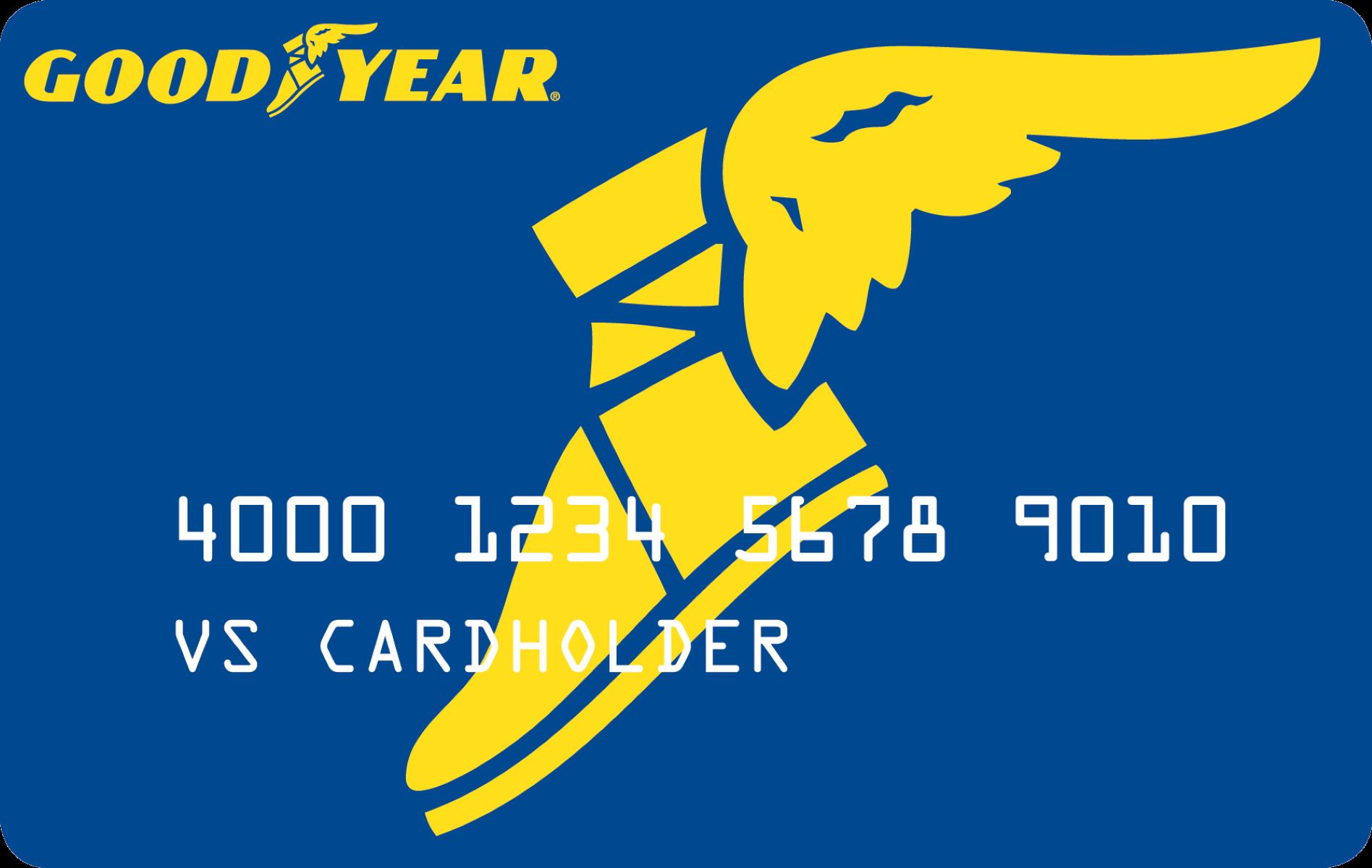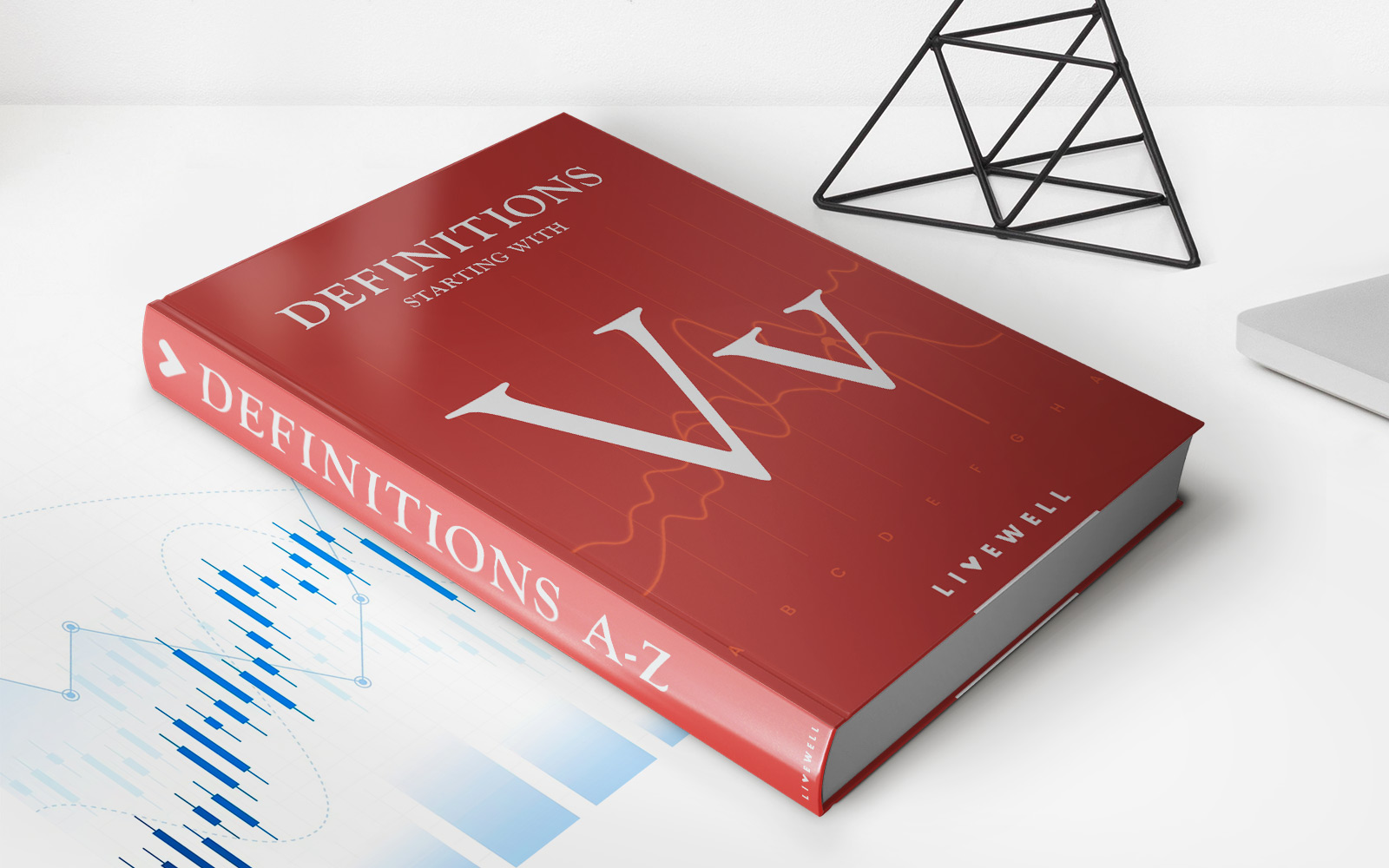Home>Finance>Where Can You Open A Coverdell Education Savings Account


Finance
Where Can You Open A Coverdell Education Savings Account
Published: November 26, 2023
Looking to finance your child's education? Discover where you can open a Coverdell Education Savings Account and start planning for their bright future.
(Many of the links in this article redirect to a specific reviewed product. Your purchase of these products through affiliate links helps to generate commission for LiveWell, at no extra cost. Learn more)
Table of Contents
- What is a Coverdell Education Savings Account?
- Eligibility criteria for opening a Coverdell Education Savings Account
- Financial institutions that offer Coverdell Education Savings Accounts
- Comparison of fees and features for different financial institutions
- Steps to open a Coverdell Education Savings Account
- Important considerations before opening a Coverdell Education Savings Account
- Benefits and drawbacks of using a Coverdell Education Savings Account
- How to contribute to a Coverdell Education Savings Account
- Rules and regulations governing Coverdell Education Savings Accounts
- Options for using funds from a Coverdell Education Savings Account
What is a Coverdell Education Savings Account?
A Coverdell Education Savings Account (ESA) is a type of savings account designed to help families save for their child’s education expenses. It was named after Senator Paul Coverdell, who sponsored the legislation that created these accounts in 1997.
Unlike a traditional savings account, a Coverdell ESA offers tax advantages when used for qualified education expenses. These expenses can include tuition, fees, books, supplies, and even certain qualified elementary and secondary education expenses.
One of the main benefits of a Coverdell ESA is its ability to grow tax-free. The contributions made to the account are not tax-deductible, meaning that they cannot be deducted from your taxable income. However, any earnings generated within the account are not subject to federal income taxes as long as they are used for qualified educational expenses.
The funds in a Coverdell ESA can be used for a variety of educational programs. This includes K-12 expenses for public, private, or religious schools, as well as college or vocational school costs.
Another advantage of a Coverdell ESA is the flexibility it offers in terms of investment options. Unlike other education savings accounts, such as 529 plans that are limited to specific investment options, a Coverdell ESA allows you to choose from a wide range of investment options including stocks, bonds, mutual funds, and more.
It is important to note that there are annual contribution limits for a Coverdell ESA. As of 2021, the maximum annual contribution is $2,000 per child. Additionally, there are income restrictions for individuals making contributions to a Coverdell ESA. The ability to contribute phases out for single taxpayers with modified adjusted gross income (MAGI) of $110,000 and joint taxpayers with MAGI of $220,000 or more.
Overall, a Coverdell Education Savings Account can be a valuable tool for families looking to save for their child’s education expenses. It provides tax advantages and flexibility in investment choices to help you grow your savings over time. By understanding the benefits and eligibility criteria, you can determine if opening a Coverdell ESA is the right financial choice for your family.
Eligibility criteria for opening a Coverdell Education Savings Account
In order to open a Coverdell Education Savings Account (ESA), there are certain eligibility criteria that must be met. These criteria are designed to ensure that the account is used for educational purposes and to provide tax advantages for qualified expenses.
Here are the key eligibility requirements for opening a Coverdell ESA:
- Age limit: The beneficiary for whom the account is opened must be under the age of 18 or a special needs beneficiary.
- Income limit: The individual or couple making the contributions to the account must meet the income limits set by the IRS. As of 2021, single taxpayers with a modified adjusted gross income (MAGI) of $110,000 or more and joint taxpayers with MAGI of $220,000 or more are not eligible to contribute to a Coverdell ESA.
- Qualified educational institution: The funds in a Coverdell ESA can be used for qualified education expenses at eligible educational institutions. This includes K-12 expenses for public, private, or religious schools, as well as college or vocational school costs.
- U.S. citizenship: Either the account holder or the beneficiary must be a U.S. citizen or resident alien with a valid Social Security number or taxpayer identification number.
It is important to note that while there is an age limit for the beneficiary, there is no age limit for the account holder. This means that parents, guardians, or family members can open a Coverdell ESA on behalf of a child and continue making contributions until the funds are used for qualified educational expenses.
Additionally, it is possible to open multiple Coverdell ESAs for the same beneficiary, as long as the total contributions across all accounts do not exceed the annual limit of $2,000 per beneficiary.
Before opening a Coverdell ESA, it is recommended to consult with a financial advisor or tax professional to ensure that you meet all the eligibility criteria and understand the potential tax benefits and implications. By meeting the eligibility requirements and properly utilizing a Coverdell ESA, you can provide a dedicated savings account for education expenses and potentially enjoy tax advantages along the way.
Financial institutions that offer Coverdell Education Savings Accounts
When considering opening a Coverdell Education Savings Account (ESA), it is important to research and choose a financial institution that offers this type of account. Many banks, credit unions, and brokerage firms provide Coverdell ESAs as part of their investment offerings. Here are some well-known financial institutions that offer Coverdell Education Savings Accounts:
- Banks: Major banks such as Bank of America, Wells Fargo, and Chase offer Coverdell ESAs. These banks provide the convenience of online account access and often have multiple branch locations for in-person assistance.
- Credit unions: Credit unions like Navy Federal Credit Union and Alliant Credit Union also offer Coverdell ESAs. Credit unions are known for their customer service and often provide competitive interest rates and low fees.
- Online brokerages: Online brokerages like TD Ameritrade, Fidelity, and Charles Schwab offer Coverdell ESAs alongside their other investment options. These brokerages usually provide a wide range of investment choices and online tools for managing your account.
When choosing a financial institution, there are several factors to consider. First, assess the fees associated with opening and maintaining a Coverdell ESA. Look for institutions that have low maintenance fees, minimal transaction fees, and no annual account fees.
Next, consider the investment options available. Some financial institutions offer a wide range of investment choices, including individual stocks, mutual funds, exchange-traded funds (ETFs), and even target-date funds tailored for education savings.
It is also important to evaluate the customer service and online platform of the financial institution. Consider whether you prefer a more personalized service with in-person assistance or if you are comfortable managing your account online.
Lastly, take into account the reputation and stability of the financial institution. Research their track record, financial strength, and customer reviews to ensure that you are choosing a reputable institution to entrust with your savings.
By considering these factors and comparing the offerings of different financial institutions, you can find the one that aligns with your needs and preferences. Remember to carefully review the terms and conditions of each institution’s Coverdell ESA before making your decision.
Comparison of fees and features for different financial institutions
When exploring different financial institutions that offer Coverdell Education Savings Accounts (ESAs), it is important to compare their fees and features to make an informed decision. Here are some key aspects to consider when conducting a comparison:
- Account maintenance fees: Look for financial institutions that offer Coverdell ESAs with little to no maintenance fees. Some institutions may charge a nominal fee for account maintenance, so it’s important to factor this into your decision-making process.
- Transaction fees: Consider any transaction fees associated with the Coverdell ESA. These can include fees for buying or selling securities within the account. Look for institutions that offer low or no transaction fees to minimize costs.
- Annual account fees: Some financial institutions may charge an annual fee for maintaining a Coverdell ESA. Compare these fees across different institutions and consider whether the benefits outweigh the costs.
- Investment options: Evaluate the investment options offered by each financial institution. Look for a diverse range of investment choices, including stocks, bonds, mutual funds, and ETFs. The availability of target-date funds specifically designed for education savings can also be beneficial.
- Customer service: Consider the level of customer service provided by each institution. Look for reliable and accessible customer support, whether through phone, email, or in-person assistance. Prompt and helpful customer service can be invaluable when you have questions or need assistance with your Coverdell ESA.
- Online platform: Assess the usability and functionality of the online platform provided by each institution. Ensure that it offers convenient and intuitive account management tools, as well as access to educational resources and investment research materials.
- Reputation and stability: Take into account the reputation and stability of the financial institution. Research their financial strength, track record, and customer reviews to ensure they are reliable and trustworthy.
By comparing these fees and features, you can choose a financial institution that aligns with your preferences and financial goals. Keep in mind that there may be additional factors specific to your individual circumstances that you may want to consider, such as proximity to physical branches, if in-person service is important to you.
Take the time to thoroughly evaluate each institution’s offerings and consider seeking guidance from a financial advisor if needed. By making an informed decision, you can select a financial institution that provides the fees, features, and support that best suit your needs for your Coverdell ESA.
Steps to open a Coverdell Education Savings Account
If you’ve decided to open a Coverdell Education Savings Account (ESA) to save for your child’s education expenses, here are the general steps to follow:
- Research financial institutions: Start by researching different financial institutions that offer Coverdell ESAs. Consider factors such as fees, investment options, customer service, and reputation. Choose the institution that best fits your needs and preferences.
- Gather necessary documents: Before opening an account, gather the required documents, such as your identification (Social Security number or taxpayer identification number), as well as the identification of the beneficiary (your child’s Social Security number or taxpayer identification number).
- Contact the financial institution: Reach out to the chosen financial institution to inquire about their account opening process. You can contact them online, by phone, or visit the nearest branch location if applicable.
- Complete the application: Fill out the application form provided by the financial institution. You will need to provide your personal information, including your name, address, and Social Security number, as well as the beneficiary’s information.
- Submit application and deposit funds: Submit the completed application form to the financial institution, either electronically or by mail. You may also need to make an initial deposit to fund the account, which can typically be done through a check or electronic transfer.
- Choose investment options: Once your account is set up and funded, you will have the option to choose from various investment options offered by the financial institution. Consider your risk tolerance, investment goals, and time horizon when selecting your investments.
- Monitor and manage your account: After opening the account, regularly monitor and manage your Coverdell ESA. Review the account statements, make contributions as desired, and ensure the funds are being used for qualified educational expenses.
It is important to note that specific steps may vary slightly depending on the financial institution you choose. Some institutions offer online account opening options for convenience, while others may require in-person visits or additional documentation.
Prior to opening a Coverdell ESA, consider consulting with a financial advisor or tax professional to ensure you understand all the rules and regulations associated with these accounts. They can help clarify any questions you may have and provide guidance on maximizing the benefits of your Coverdell ESA.
Important considerations before opening a Coverdell Education Savings Account
Before opening a Coverdell Education Savings Account (ESA), it is important to carefully consider several factors to ensure that it aligns with your financial goals and circumstances. Here are some important considerations to keep in mind:
- Educational goals: Determine your educational goals for the account. Decide if you plan to use the funds for K-12 expenses, college savings, or a combination of both. This will help you determine the appropriate contribution amounts and investment strategy.
- Contribution limits: Understand the contribution limits for a Coverdell ESA. As of 2021, the maximum annual contribution is $2,000 per child. Consider if this amount aligns with your savings goals and if you have other education savings vehicles available.
- Qualified expenses: Familiarize yourself with the IRS guidelines on qualified education expenses. Ensure that the expenses you anticipate for the future are eligible for withdrawal from the Coverdell ESA to avoid any potential tax penalties.
- Investment options: Evaluate the investment options provided by the financial institution offering the Coverdell ESA. Consider your risk tolerance, investment knowledge, and desired level of involvement in managing the account. Choose investments that align with your preferences and financial goals.
- Tax implications: Understand the tax implications associated with a Coverdell ESA. While contributions are not tax-deductible, earnings within the account grow tax-free, and withdrawals for qualified education expenses are tax-free. Consult with a tax professional to ensure you maximize the available tax benefits.
- Flexibility: Consider the flexibility offered by a Coverdell ESA. Unlike some other education savings accounts, Coverdell ESAs allow for a wide range of qualified education expenses, including K-12 expenses. Assess whether this flexibility aligns with your anticipated educational needs.
- Income eligibility: Determine if you meet the income eligibility requirements to contribute to a Coverdell ESA. Contributions phase out for single taxpayers with a modified adjusted gross income (MAGI) of $110,000 or more and joint taxpayers with MAGI of $220,000 or more.
- Effect on financial aid: Understand how a Coverdell ESA may impact your child’s eligibility for financial aid. While contributions are considered parental assets and can potentially reduce need-based aid, the impact can vary depending on the school and the specific financial aid formulas used.
It is recommended to consult with a financial advisor or tax professional before opening a Coverdell ESA. They can provide personalized advice based on your specific financial situation and help you make informed decisions about contributing to and managing your Coverdell ESA.
By carefully considering these factors, you can determine if a Coverdell ESA is the right education savings vehicle for you and ensure that it aligns with your long-term financial objectives.
Benefits and drawbacks of using a Coverdell Education Savings Account
Using a Coverdell Education Savings Account (ESA) offers several benefits that can help you save for your child’s education expenses. However, it is important to also consider the potential drawbacks before deciding if a Coverdell ESA is the right choice for you. Here are the benefits and drawbacks to consider:
Benefits:
- Tax advantages: One of the significant benefits of a Coverdell ESA is the potential for tax-free growth of funds. While contributions are not tax-deductible, any earnings generated within the account are not subject to federal income taxes as long as they are used for qualified education expenses.
- Flexible use of funds: Funds in a Coverdell ESA can be used for a wide range of qualified education expenses, including tuition, books, supplies, and even certain K-12 expenses. This flexibility allows you to tailor the use of the funds to your specific educational needs.
- Wide range of investment options: Unlike some other education savings accounts, a Coverdell ESA offers a wide range of investment options. You can choose from stocks, bonds, mutual funds, and more, allowing you to create a diversified investment portfolio based on your risk tolerance and investment preferences.
- Transferable: If the intended beneficiary does not use up all the funds in the Coverdell ESA, the account can be transferred to another eligible family member, such as a sibling or a cousin, without penalty.
Drawbacks:
- Contribution limits: There is a maximum annual contribution limit of $2,000 per child for a Coverdell ESA. If you wish to contribute more than this amount, you will need to explore other education savings options.
- Income limitations: The ability to contribute to a Coverdell ESA phases out for single taxpayers with a modified adjusted gross income (MAGI) of $110,000 or more and joint taxpayers with MAGI of $220,000 or more. This means that not everyone may be eligible to contribute to a Coverdell ESA, depending on their income level.
- Educational expenses only: Unlike other education savings accounts such as 529 plans, the funds in a Coverdell ESA can only be used for qualified education expenses. If the funds are used for non-qualified expenses, a penalty and tax liability may be incurred.
- Limited time frame: Contributions to a Coverdell ESA can only be made until the designated beneficiary reaches the age of 18. This limited time frame may not provide enough opportunity for savings to fully cover the anticipated education expenses.
Consider these benefits and drawbacks before opening a Coverdell ESA. Assess how they align with your financial goals, tax situation, and educational needs. It is recommended to consult with a financial advisor or tax professional for personalized advice based on your specific circumstances.
By carefully weighing the benefits and drawbacks, you can determine if a Coverdell ESA is the right education savings account for you and your family.
How to contribute to a Coverdell Education Savings Account
Contributing to a Coverdell Education Savings Account (ESA) is relatively straightforward. Here are the steps to follow when making contributions:
- Choose a financial institution: Select a financial institution that offers Coverdell ESAs and aligns with your needs and preferences. Research the institution’s fees, investment options, and customer service to make an informed decision.
- Open a Coverdell ESA: If you haven’t already done so, open a Coverdell ESA by completing an application form provided by the chosen financial institution. Submit the necessary documentation and initial deposit, if required.
- Determine the contribution amount: Decide how much you want to contribute to the Coverdell ESA. Remember that the maximum annual contribution limit is $2,000 per child.
- Make a contribution: There are several ways to contribute to a Coverdell ESA. These include:
- Electronic transfer: Set up electronic transfers from your bank account to the Coverdell ESA. This provides a convenient and automated way to make regular contributions.
- Check or money order: Write a check or money order payable to the financial institution holding your Coverdell ESA. Include the account number and specify that the contribution is for the Coverdell ESA.
- Payroll deduction: If offered by your employer, opt for automatic payroll deductions to contribute to your Coverdell ESA. This allows for a portion of your salary to be directed into the account.
- Ensure timely contributions: Be aware of the contribution deadline, which is typically the tax filing deadline for the corresponding tax year.
- Monitor contribution limits: Keep track of your contributions to ensure they do not exceed the annual limit of $2,000 per child. Contributions made to a Coverdell ESA from multiple sources must be aggregated to determine if they surpass the maximum allowable limit.
It is important to note that you can make contributions to a Coverdell ESA up until the beneficiary reaches the age of 18, unless they have special needs. After that point, no further contributions can be made, but the funds can continue to grow tax-free.
Remember to retain records of your contributions, including bank statements, deposit receipts, or any other documentation that proves the amount and date of each contribution. These records will be helpful for tax purposes and to ensure compliance with IRS regulations.
If you have any questions or need assistance with contributing to your Coverdell ESA, reach out to the financial institution where the account is held. They will be able to provide guidance and answer any specific queries you might have.
Rules and regulations governing Coverdell Education Savings Accounts
Coverdell Education Savings Accounts (ESAs) are subject to certain rules and regulations outlined by the Internal Revenue Service (IRS). Understanding these rules is crucial to ensure compliance and maximize the benefits of your Coverdell ESA. Here are the key rules and regulations governing Coverdell ESAs:
- Use for qualified education expenses: Funds in a Coverdell ESA must be used for qualified education expenses. This includes expenses such as tuition, fees, books, supplies, and certain K-12 expenses for public, private, or religious schools. Non-qualified expenses may be subject to taxes and penalties.
- Annual contribution limit: The maximum annual contribution limit for a Coverdell ESA is $2,000 per child. This limit applies across all accounts held for the same beneficiary, so it’s important to aggregate contributions if there are multiple accounts.
- Income eligibility: Individuals contributing to a Coverdell ESA must meet certain income eligibility requirements. Contributions phase out for single taxpayers with a modified adjusted gross income (MAGI) of $110,000 or more and joint taxpayers with MAGI of $220,000 or more.
- Age limit: Contributions to a Coverdell ESA can only be made until the beneficiary reaches the age of 18, unless they have special needs. After that, the account can still grow tax-free, but no further contributions can be made.
- Tax treatment: Contributions to a Coverdell ESA are not tax-deductible. However, any earnings within the account grow tax-free, and withdrawals for qualified education expenses are also tax-free.
- Transferability: If the intended beneficiary does not use up all the funds in the Coverdell ESA, the account can be transferred to another eligible family member without penalty. This includes siblings, cousins, and even extended family members, as long as they are under the age of 30.
- Penalties: If the funds from a Coverdell ESA are not used for qualified education expenses or transferred to an eligible family member, withdrawals may be subject to income tax and a 10% penalty on the earnings portion of the withdrawal.
It’s important to stay updated on any changes or modifications to the rules and regulations governing Coverdell ESAs. Consult with a financial advisor or tax professional to ensure compliance with current guidelines and for personalized advice based on your specific circumstances.
By understanding and adhering to the rules and regulations, you can make the most of your Coverdell ESA and take advantage of the tax benefits and flexibility it offers for funding education expenses.
Options for using funds from a Coverdell Education Savings Account
When it comes time to use the funds in your Coverdell Education Savings Account (ESA), you have several options for how to apply them towards qualified education expenses. It’s important to understand these options so you can make the most of your savings. Here are the primary ways to utilize funds from a Coverdell ESA:
- Qualified expenses for K-12 education: The funds in a Coverdell ESA can be used to pay for qualified education expenses at eligible K-12 schools. This includes expenses such as tuition, fees, books, supplies, and even certain computer and technology-related expenses.
- Qualified expenses for higher education: The majority of Coverdell ESA withdrawals are used for qualified education expenses at colleges, universities, vocational schools, or other eligible post-secondary institutions. These expenses may include tuition, fees, books, supplies, equipment, and certain room and board costs.
- Restitution to the account owner: If the intended beneficiary of the Coverdell ESA does not use all the funds or is unable to use them, the account owner has several options. They can withdraw the remaining funds, transfer them to an eligible family member’s Coverdell ESA, or roll them over into a 529 plan without incurring taxes or penalties.
- Change the beneficiary: If the designated beneficiary of the Coverdell ESA does not end up pursuing higher education or exhausts the funds, you have the option to change the beneficiary to an eligible family member who can use the remaining funds for their educational expenses. Eligible family members include siblings, cousins, and even extended family members under the age of 30.
Remember that it is crucial to use the funds from a Coverdell ESA for qualified education expenses. If the withdrawals are not used for qualified expenses or transferred to an eligible family member, they may be subject to income tax and a 10% penalty on the earnings portion of the withdrawal. Keep detailed records of your expenses and consult with a tax professional if you have any questions or concerns.
It’s important to note that as of 2021, the CARES Act expanded the use of 529 plans to include certain K-12 expenses, which may provide additional options for covering education costs. Consider comparing the benefits and limitations of using a Coverdell ESA versus a 529 plan to determine the most suitable option for your specific needs.
By utilizing the funds from your Coverdell ESA wisely, you can help support your family’s educational expenses and make the most of your savings over time.














